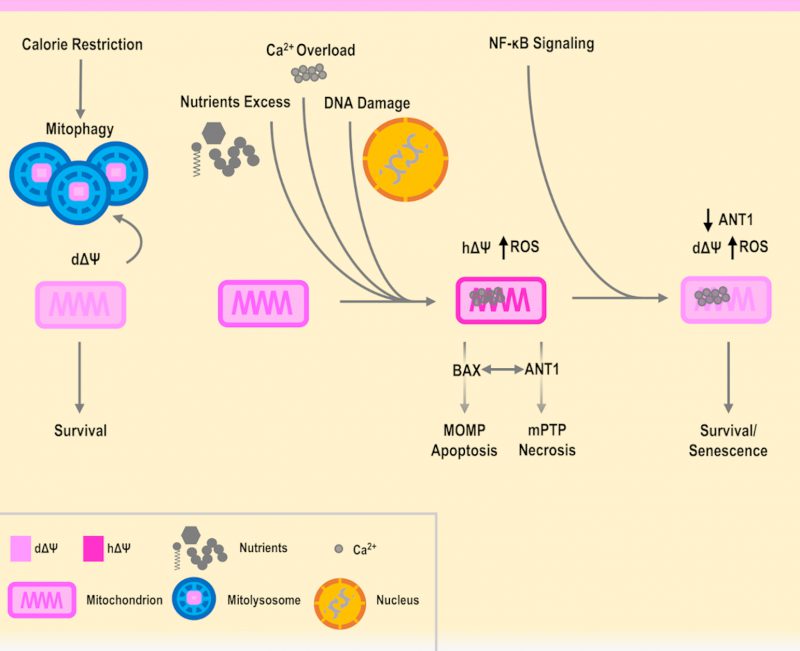Back to article: Regulation of the mitochondrial permeability transition pore and its effects on aging
FIGURE 1: The mPTP, a potential hub in the regulation of cell survival and cell death. Calorie restriction features mitochondrial depolarization and mitophagy, promoting survival. During mitophagy, mitochondria are degraded inside mitolysosomes. In contrast, in presence of death stimuli such as excessive nutrients, calcium overload or DNA damage, cells may undergo cell death. The balance between apoptosis and necrosis could be regulated by the mitochondrial membrane potential coupled with the levels of ANT1 activity and the interactions with other players such as BAX. Further, pathways increasing the expression of ANT1 could foster cell death through the mPTP, while pathways decreasing it (e.g. NF-κB signaling pathway) could favor mPTP closing and cell survival. See the text for details. Δψ, mitochondrial membrane potential with d, depolarized and h, hyperpolarized; MOMP, mitochondrial outer membrane permeabilization; mPTP, mitochondrial permeability transition pore. Organelles, damaged DNA, Ca2+ and nutrients (e.g. carbohydrates such as glucose, proteins, fatty acids) are simplified graphical representations.

